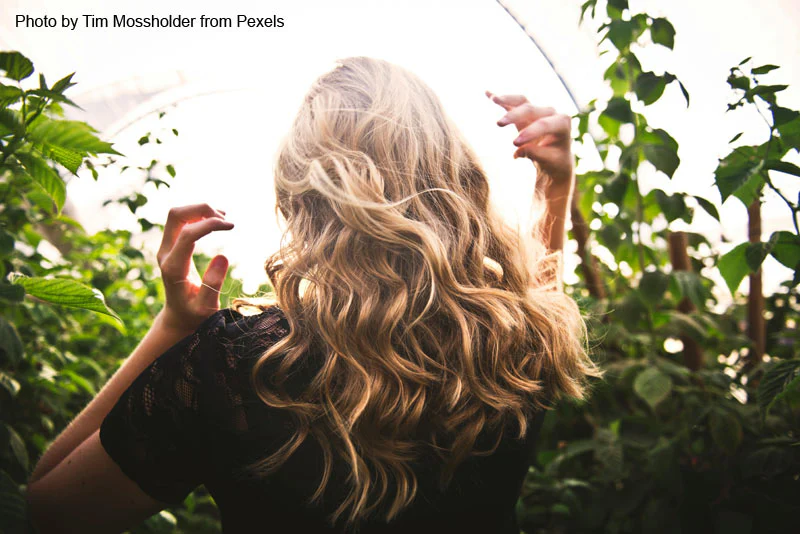When it comes to beauty and confidence, your hair plays a huge role. Whether you wear it long, short, curly, straight, dyed, or natural, your hair tells a story about you. Just like your skin needs proper attention and care, your hair deserves the same. But what exactly does hair care involve, and how can you ensure your locks stay healthy and vibrant?
In this comprehensive guide, we’ll dive into the essentials of hair care, from understanding what it really is to outlining a routine that will keep your hair looking and feeling fabulous.
What Is Hair Care?
Hair care refers to the practices and products you use to maintain the health, cleanliness, and appearance of your hair. It encompasses everything from washing and conditioning to styling and treating specific hair issues like dryness, breakage, or dandruff.
Hair care is not one-size-fits-all. It varies based on your hair type (straight, wavy, or curly), texture (fine, medium, thick), and even your lifestyle. Environmental factors like humidity, pollution, and sun exposure can also affect your hair’s health, which makes a tailored routine essential.
Moreover, hair care isn’t just about external treatment, your internal health plays a role too. Nutritional deficiencies, stress, and hormonal imbalances can also impact the strength and appearance of your hair. Understanding the root cause of any hair issues is the first step toward effective care.
The Importance of a Proper Hair Care Routine
Having a consistent and effective hair care routine is key to maintaining healthy hair. Here’s why it matters:
- Prevents Damage: Regular care helps reduce split ends, breakage, and dryness.
- Promotes Growth: Healthy hair and scalp conditions are vital for new growth.
- Enhances Appearance: Proper care adds shine, bounce, and volume to your hair.
- Improves Scalp Health: A clean, nourished scalp is the foundation of strong hair.
- Boosts Confidence: When your hair looks great, you feel great too!
Investing time in your hair care routine also saves you time and money in the long run. You may find yourself needing fewer salon visits, less expensive treatments, and fewer products to correct damage when you’re consistently taking care of your hair.
Essential Steps for Healthy & Gorgeous Hair
Achieving beautiful hair doesn’t necessarily require expensive salon treatments. A good hair care routine involves a few essential steps that you can easily follow at home:
1. Cleansing
Cleansing removes dirt, sweat, and product buildup. Choose a shampoo that suits your hair type and wash your hair 2-3 times a week to avoid stripping natural oils. If you have an oily scalp, more frequent washing may be needed, while dry or curly hair may only require a weekly cleanse.
Look for shampoos with gentle, sulfate-free formulas. Harsh sulfates can strip the hair of its natural oils, leaving it dry and brittle. Ingredients like tea tree oil, peppermint, or charcoal can help purify the scalp without over-drying.
2. Conditioning
Conditioner helps to hydrate and detangle hair, making it softer and more manageable. Focus on the mid-lengths and ends where hair tends to be drier. For fine hair, opt for a lightweight conditioner that won’t weigh it down. For thick or curly hair, richer formulas can help seal in moisture.
You can also try a leave-in conditioner for added hydration and protection throughout the day, especially if you style your hair regularly.
3. Deep Conditioning / Hair Mask
Once a week, use a deep conditioner or hair mask to restore moisture and repair damage. This is especially important for color-treated or heat-damaged hair. Look for masks that contain keratin, biotin, or natural oils like argan, jojoba, or coconut.
Apply the mask to clean, towel-dried hair and let it sit for at least 10–15 minutes. For a more intensive treatment, cover your hair with a shower cap and apply gentle heat using a blow dryer or wrap it in a warm towel.
4. Drying Properly
Avoid rubbing your hair with a towel. Instead, gently pat it dry or use a microfiber towel. Regular towels can cause friction, which leads to frizz and breakage. Let your hair air dry when possible.
If you use a blow dryer, keep the heat setting on low or medium and maintain a safe distance from the scalp. Always use a heat protectant spray before blow-drying, straightening, or curling your hair.
5. Detangling
Use a wide-tooth comb or a detangling brush to gently remove knots. Start at the ends and work your way up to avoid breakage. Detangle when your hair is damp and has conditioner or a leave-in product applied, as this reduces the risk of pulling and snapping.
6. Moisturizing and Sealing
Apply a leave-in conditioner or hair oil to retain moisture. This is especially useful for curly or dry hair types. Oils like argan, avocado, and castor oil not only moisturize but also help seal the hair cuticle and add shine.
Moisturizing regularly helps maintain elasticity and manageability, especially in colder or drier climates when hair tends to lose moisture more quickly.
7. Scalp Care
A healthy scalp equals healthy hair. Massage your scalp regularly to stimulate blood flow and consider using scalp treatments if you suffer from dandruff or dryness. Tea tree oil, salicylic acid, and niacinamide are great ingredients to look for in scalp care products.
Exfoliating your scalp once every 1–2 weeks can also help remove dead skin cells and product buildup, paving the way for healthier hair growth.
8. Trimming
Trim your hair every 6-8 weeks to remove split ends and encourage healthy growth. Even if you’re growing your hair out, regular trims prevent damaged ends from affecting the rest of the hair strand.
Trimming also helps your hair maintain its shape and style, especially if you wear layered or textured cuts.
Best Hair Care Practices
Here are some bonus tips to level up your hair care game:
- Use satin or silk pillowcases: These cause less friction than cotton, reducing breakage.
- Protect your hair from the sun: UV rays can damage hair just like skin. Consider wearing a hat or using UV-protection sprays when you’re outdoors for long periods.
- Limit chemical treatments: Excessive coloring, perming, or relaxing can weaken hair. Always consult a professional and space out treatments.
- Eat a balanced diet: Your hair needs nutrients like protein, iron, and vitamins A, C, and E. Omega-3 fatty acids found in fish, nuts, and flaxseed are particularly great for hair health.
- Stay hydrated: Drinking plenty of water helps keep your scalp and hair hydrated from the inside out.
- Avoid tight hairstyles: Styles like ponytails, buns, or braids that are too tight can lead to tension and breakage over time. Try looser styles and vary them to prevent stress on specific areas of your scalp.
Conclusion
Hair care is more than just a beauty routine—it’s a commitment to your overall well-being. By understanding your hair’s needs and taking the time to nurture it, you can enjoy luscious, strong, and beautiful hair every day. Whether you’re starting from scratch or refining your existing routine, remember that consistency is key. Small, regular efforts can make a big difference in the health and appearance of your hair.
Take pride in your hair and treat it with the love it deserves. Gorgeous hair isn’t about perfection—it’s about nourishment, care, and confidence.
Frequently Asked Questions
Does trimming hair make it grow faster?
Not exactly. Trimming doesn’t affect the rate at which your hair grows, but it does help prevent split ends from traveling up the shaft and causing breakage. Regular trims keep your hair looking healthy and can make it seem like it’s growing faster because it stays fuller and more even.
How do I care for dry hair?
Dry hair needs extra moisture. Use a sulfate-free shampoo, deep condition weekly, and incorporate oils like argan or coconut oil into your routine. Avoid excessive heat styling and protect your hair from harsh weather. Also, limit washing your hair too frequently, as this can strip away natural oils. Use hydrating leave-ins and sleep with a silk or satin bonnet to lock in moisture overnight.
What type of shampoo should I use?
That depends on your hair type:
- Oily hair: Use a clarifying or balancing shampoo. Look for ingredients like tea tree oil or witch hazel.
- Dry or damaged hair: Look for moisturizing or repairing shampoos with ingredients like shea butter, glycerin, and keratin.
- Color-treated hair: Use sulfate-free shampoos designed to protect color and prevent fading.
- Curly hair: Choose a gentle, hydrating formula with minimal sulfates and added oils or proteins to enhance curl definition.
By making hair care a priority, you’re investing in yourself. Here’s to good hair days—every day!



